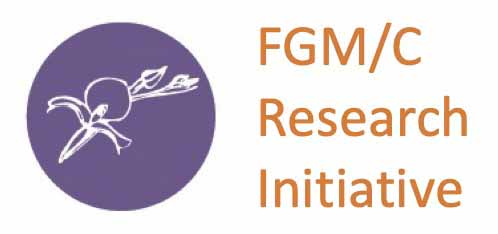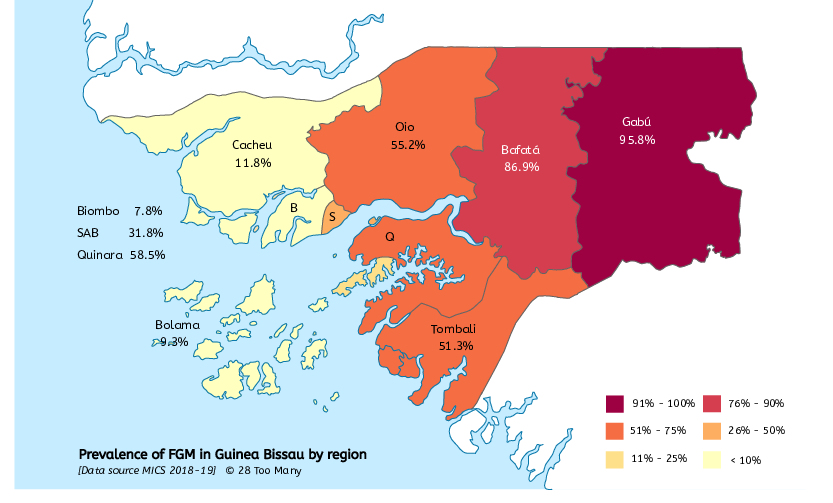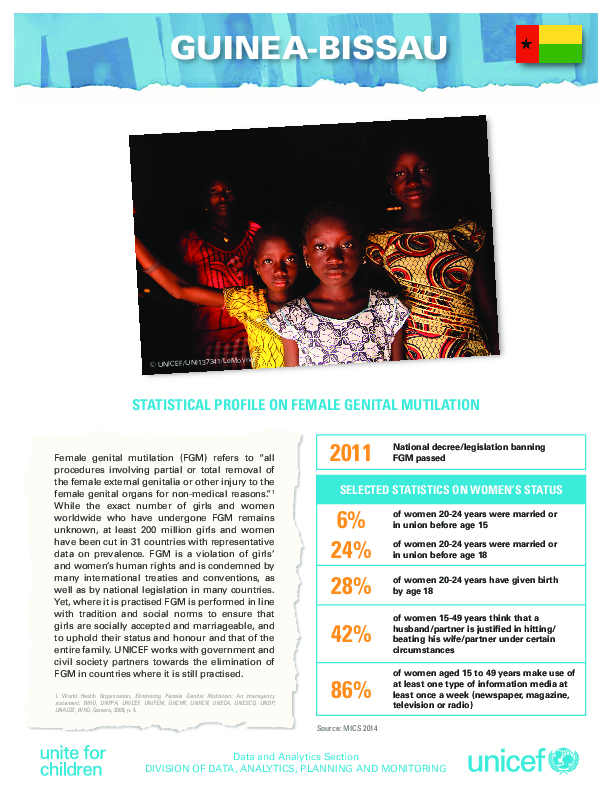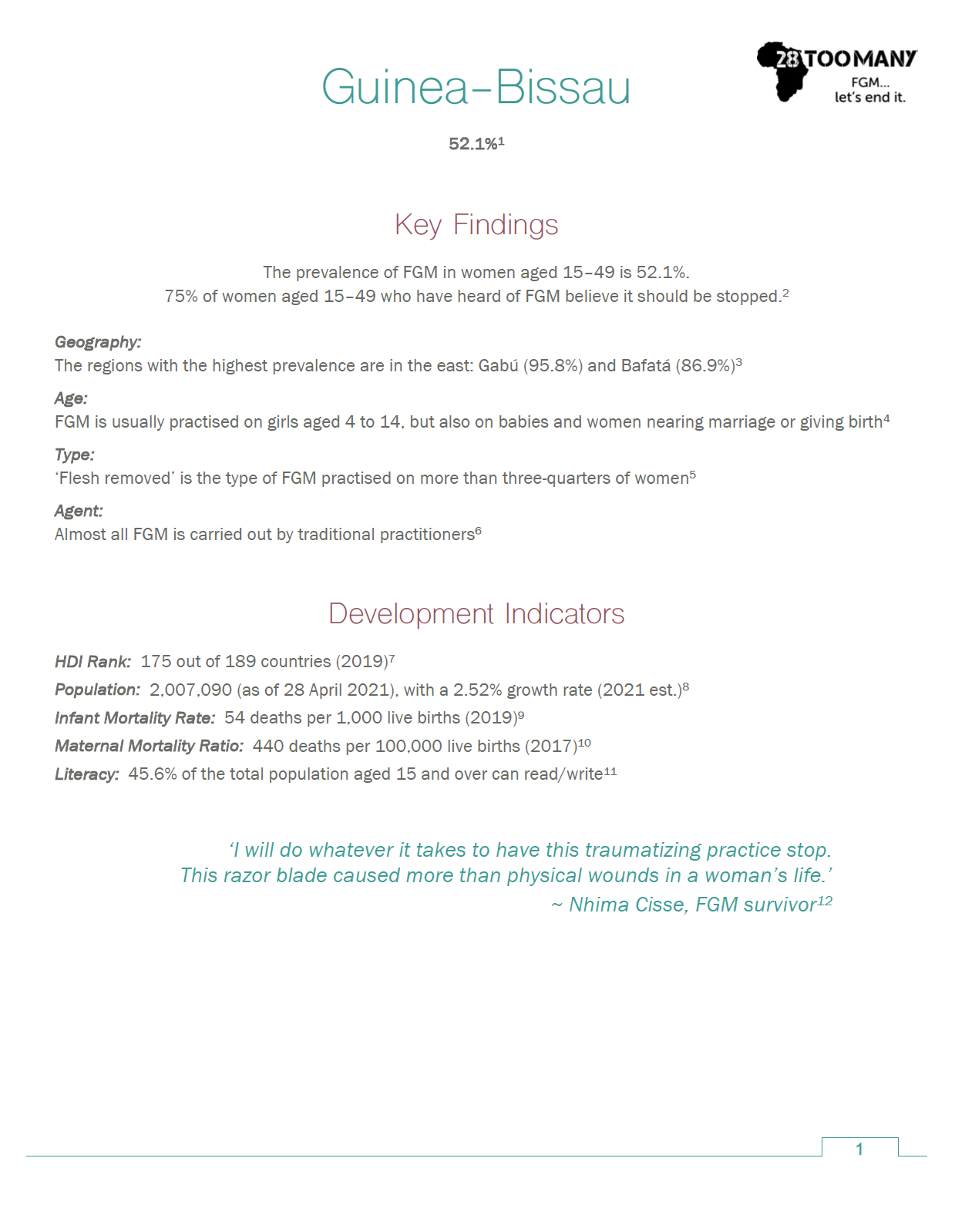Home | Research & Resources | Guinea Bissau
Key Findings
The prevalence of FGM/C among women aged 15–49 in Guinea Bissau is 52.1%.
75.8% of women aged 15–49 who have heard of FGM/C believe it should be stopped.
Geography
The regions with the highest prevalence are in the east: Gabú (95.8%) and Bafatá (86.9%)
Age
FGM/C is usually practised on girls aged 4 to 14, but also on babies and women nearing marriage or giving birth
Type
‘Flesh removed’ is the type of FGM/C practised, more than three-quarters of women have experienced this type.
Agent
Almost all FGM/C is carried out by traditional practitioners
Distribution of FGM/C across Guinea Bissau
The regions in Guinea Bissau with the highest FGM/C prevalence among women aged 15–49 are in the east: Gabú (96.3%) and Bafatá (86.8%). Prevalence generally decreases towards the west of the country, with the central regions around 50%. The regions with the lowest prevalence are Biombo (7.8%) and Bolomba/Bijagos (9.3%). Women aged 15–49 who live in rural areas are more likely to undergo FGM/C (58.2%) than those who live in urban areas (42.7%).
95% of Muslim women aged 15–49 have undergone FGM/C. It is much less prevalent among women of other religions in Guinea Bissau: no religious affiliation (8%); ‘other’ Christians and other religions (7%), Roman Catholics (6%), and Animists (5%).
The prevalence of FGM/C in Guinea Bissau appears to have increased from 44.9% in 2014 to 52.1% in 2018-9. Between 2006 and 2014, the overall prevalence of FGM/C among women aged 15–49 stayed roughly constant (44.5% in 2006 and 44.9% in 2014). It is not fully understood why the prevalence measured in 2018-9 had increased to 52.1%.
Trends in FGM Prevalence in Guinea Bissau
The prevalence of FGM/C in Guinea Bissau appears to have increased from 44.9% in 2014 to 52.1% in 2018-9. This increase is not fully understood. However, due to the large age range of women included in the survey, the prevalence in women aged 18 and over is consistently between 50 and 55%, whereas in women aged 15-17 the figure is lower at 45.4%. Breaking down the data by age cohort in this way avoids the challenges of making comparisons between surveys and, in this case, suggests that some progress has been made towards lower prevalences among younger women.
FGM/C Legislation in Guinea Bissau
The main law relating to FGM/C in Guinea Bissau is the Federal Law to Prevent, Fight and Suppress Female Genital Mutilation – Law No. 14/2011, which was passed in 2011. There is a lack of information on cases brought to court, however.
Development Indicators
Population Growth
2,007,090 (as of 28 April 2021), with a 2.52% growth rate (2021 est.)
Infant Mortality
54 deaths per 1,000 live births (2019)
Maternal Mortality
440 deaths per 100,000 live births (2017)
HDI Rank
175 out of 189 countries (2019)



.jpg)
_portuguese_cover.jpg)
_cover.jpg)
_portuguese_cover.jpg)
_cover.jpg)

.jpeg)
